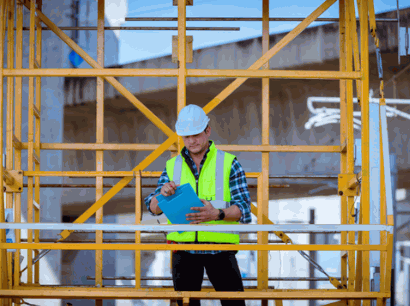Whenever construction work takes place, ensuring the safety of all workers is paramount. And as scaffolding forms the backbone of countless construction projects, regular and thorough inspections are vitally important. Scaffolding provides essential support and access at various heights, enabling workers to perform their tasks efficiently.
This crucial equipment must be rigorously maintained to ensure the well-being of everyone on site. But how often does a scaffolding structure have to be inspected? The answer is complex, involving an understanding of legal requirements, adherence to best practices, and the implementation of practical steps necessary to maintain a safe and compliant working environment. By examining these elements, we can better appreciate the importance of regular scaffold inspections and the role they play in safeguarding the lives of construction workers.
In this Scaffold Crew blog, we're going to explore each aspect to arrive at a sensible and straightforward conclusion!
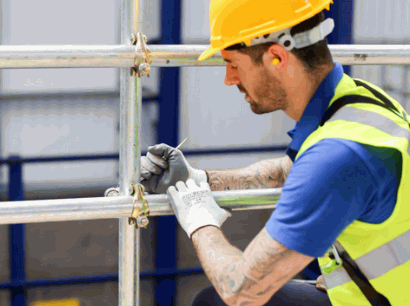
According to the Work at Height Regulations 2005 and the Health and Safety Executive, scaffolding must be inspected by a competent person (more about this term later) and checked at suitable intervals. This is a legal requirement to ensure that all scaffolding (or any working platforms) used for construction work is safe and secure.
The regulations specify that a scaffold must be properly inspected before its first use (initial inspection), after any event that could affect its stability (such as strong winds, heavy rain, or substantial changes), and at regular intervals not exceeding seven days. Additionally, these inspections are crucial to identify any potential hazards that could jeopardise the safety of workers or the integrity of the scaffold structure.
Discover: Is It Illegal To Work On A Roof Without Scaffolding
Compliance with these regulations is not just bureaucratic red tape; it is essential for preventing accidents and ensuring a safe working environment on all construction sites.
The regulations also mandate that detailed records of each inspection be maintained, documenting any identified issues and the corrective actions taken.
An inspection schedule should form part of the risk assessment, which must include a contingency for unexpected events or a change of circumstances.
This systematic approach to scaffold inspections helps in promptly addressing any safety concerns, thereby significantly reducing the risk of accidents and injuries on site.
While this seems to answer the question pretty well, there's more information to examine...
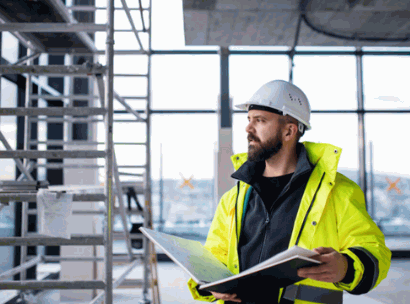
Earlier, we mentioned that only a competent person can inspect scaffolding. But what does that mean, exactly? Well, it so happens that we know a lot about this at the Scaffold Crew! Each one of our staff is trained and licensed to erect, inspect, and dismantle scaffolding, and they are all classed as competent persons.
So, let's explain what that means: A competent person is an individual who possesses the necessary theoretical knowledge and practical experience to perform scaffold inspections effectively. This person should be well-versed in the principles of scaffold construction, safety protocols, and potential hazards associated with scaffolding use.
Appropriate training is crucial to ensure that the person making the scaffold inspection is capable of identifying any issues that could compromise safety. This training includes comprehensive courses on scaffold inspection requirements, understanding the structural integrity of scaffolds, and the latest height regulations.
Delve into: Does Scaffolding Damage Walls
Regular training and updates on height regulations, scaffold inspection requirements, and health and safety standards are vital for all individuals involved in scaffold inspections. This continuous education ensures that the competent person stays current with any changes in legislation, best practices, and new safety techniques. At the Scaffold Crew, we provide training and prioritise ongoing education and professional development to maintain the highest standards of safety and competence in our team. This commitment to excellence not only ensures compliance with legal requirements but also significantly enhances the overall safety and efficiency of our construction projects.
Our complete training includes the use of scaffolding equipment such as fall protection, fitting scaffolds, working on fragile surfaces, and roof work. All of this is essential to prevent falls and fatal injuries.
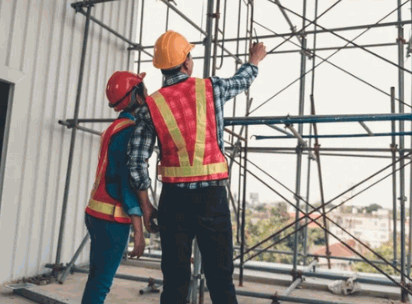
Aside from the weekly checks, it is necessary to inspect scaffolding at other times due to various factors, such as:
High winds, heavy rain, or strong winds can significantly affect the stability of scaffolding, necessitating additional inspections to ensure safety. Adverse weather conditions can loosen fittings, dislodge components, or even cause structural shifts. Therefore, after any event of severe weather, an immediate inspection is crucial to assess and rectify any potential damage or instability. Regular checks in such conditions help to prevent injuries and accidents and ensure that the scaffold remains a safe working platform for all personnel involved.
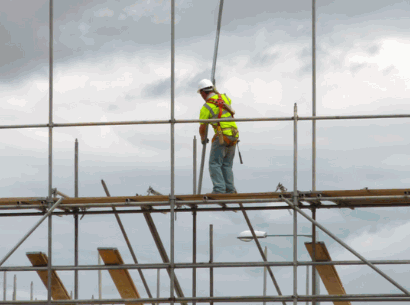
Any significant changes or additions to the structure must be inspected to verify that the modifications have not compromised its integrity. This includes alterations like extending the height, adding extra levels, or changing the configuration of the scaffold. Each modification can affect the overall balance and strength of the structure. An inspection following alteration ensures that the scaffold remains robust and capable of supporting the necessary loads. It is essential to ensure that these changes do not introduce new risks or vulnerabilities to the scaffold system.
Any incident that might impact the scaffold's stability, such as a collision or equipment malfunction, should prompt an immediate inspection. For example, if a vehicle accidentally strikes the scaffold, or if there is an unexpected shift due to a mechanical fault in lifting equipment, an immediate check is necessary. Such events can compromise the scaffold’s structure, making it unsafe for continued use. Immediate inspections in these scenarios are critical to identify any damage or weaknesses and to take corrective actions promptly to restore the scaffold's safety and functionality.
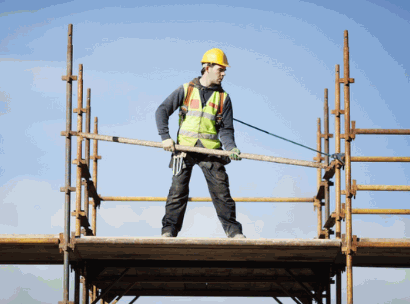
Besides the primary factors, there are other scenarios where additional inspections are vital. These include:
If scaffolding has been left unused for a significant period, an inspection is necessary before resuming work to ensure no components have deteriorated or been tampered with. During these periods, various environmental factors such as weather conditions, temperature fluctuations, and potential unauthorized access could impact the integrity of the scaffolding. Moisture can lead to rust or corrosion on metal parts, while prolonged exposure to the sun can weaken some materials. Vandalism or accidental tampering might also occur, compromising the structure's safety. Therefore, a thorough inspection ensures that all components are in optimal condition and safe for use, preventing accidents and ensuring compliance with safety regulations.
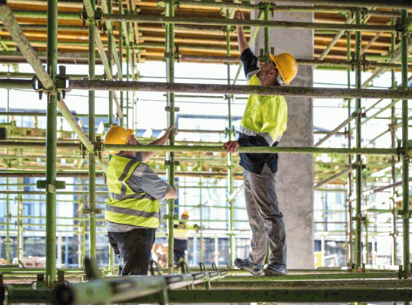
Certain construction activities that generate vibrations or involve heavy equipment can also necessitate more frequent checks. Activities such as demolition, pile driving, or the use of large machinery can cause shifts or instability in the scaffold structure. The vibrations and heavy loads can loosen connections, bolts, and other critical components, increasing the risk of structural failure. Regular inspections during these high-risk activities can identify and rectify issues promptly, ensuring that the scaffolding remains stable and safe for workers. This proactive approach minimizes the risk of accidents and enhances overall site safety.
Beyond regular weekly inspections, routine maintenance checks can help in the early identification of wear and tear, ensuring the long-term safety and durability of the scaffold. This is especially important for scaffolding structures that are likely to be in place for an extended period. Routine checks might include tightening connections, checking for corrosion, replacing worn-out parts, and ensuring that all safety features are functioning correctly. By addressing minor issues before they become significant problems, maintenance checks extend the life of the scaffolding and maintain a high safety standard. This ongoing vigilance is crucial for preventing accidents and ensuring that the scaffold remains reliable throughout its use.
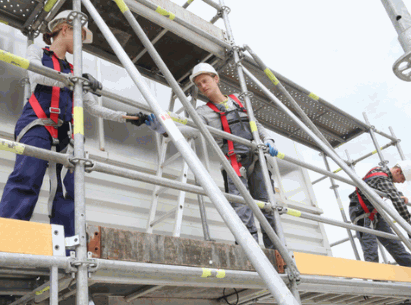
As well as ensuring that the scaffold is inspected properly, each one must be meticulously documented in an inspection report. This report should detail the findings of the inspection, any issues identified, and the actions taken to rectify them. It should include information such as the date and time of the inspection, the name and qualifications of the inspector, and a comprehensive list of any defects or hazards observed.
Maintaining thorough inspection reports is not only a legal requirement but also a crucial part of ensuring ongoing safety on the worksite. These records provide a clear and traceable history of the scaffold's condition and the measures taken to address any problems. They serve as an essential reference for future inspections and can be invaluable in the event of an incident or investigation, demonstrating due diligence and compliance with health and safety regulations.
Take a look: How Much To Rent Scaffolding
Moreover, detailed inspection reports can help identify recurring issues or patterns that may indicate underlying problems with the scaffolding or the processes in place. This proactive approach allows for continuous improvement in safety practices and helps prevent accidents before they occur.
By ensuring that every scaffold inspection is properly documented, construction managers can provide a safer working environment, promote accountability, and meet the stringent requirements set forth by regulatory bodies. This practice not only safeguards the health and well-being of workers but also protects the organisation from potential legal and financial penalties.
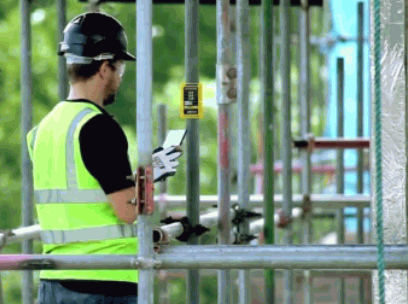
We've looked into all the possible facts to see how often you need to inspect scaffolding, so here's a summary of the main points to take away:
Whether you're using scaffolding or a mobile working platform, the rules are there to keep you safe. Armed with the information above, you can ensure that your scaffolding meets the required standards and provides a safe working platform for everyone.
